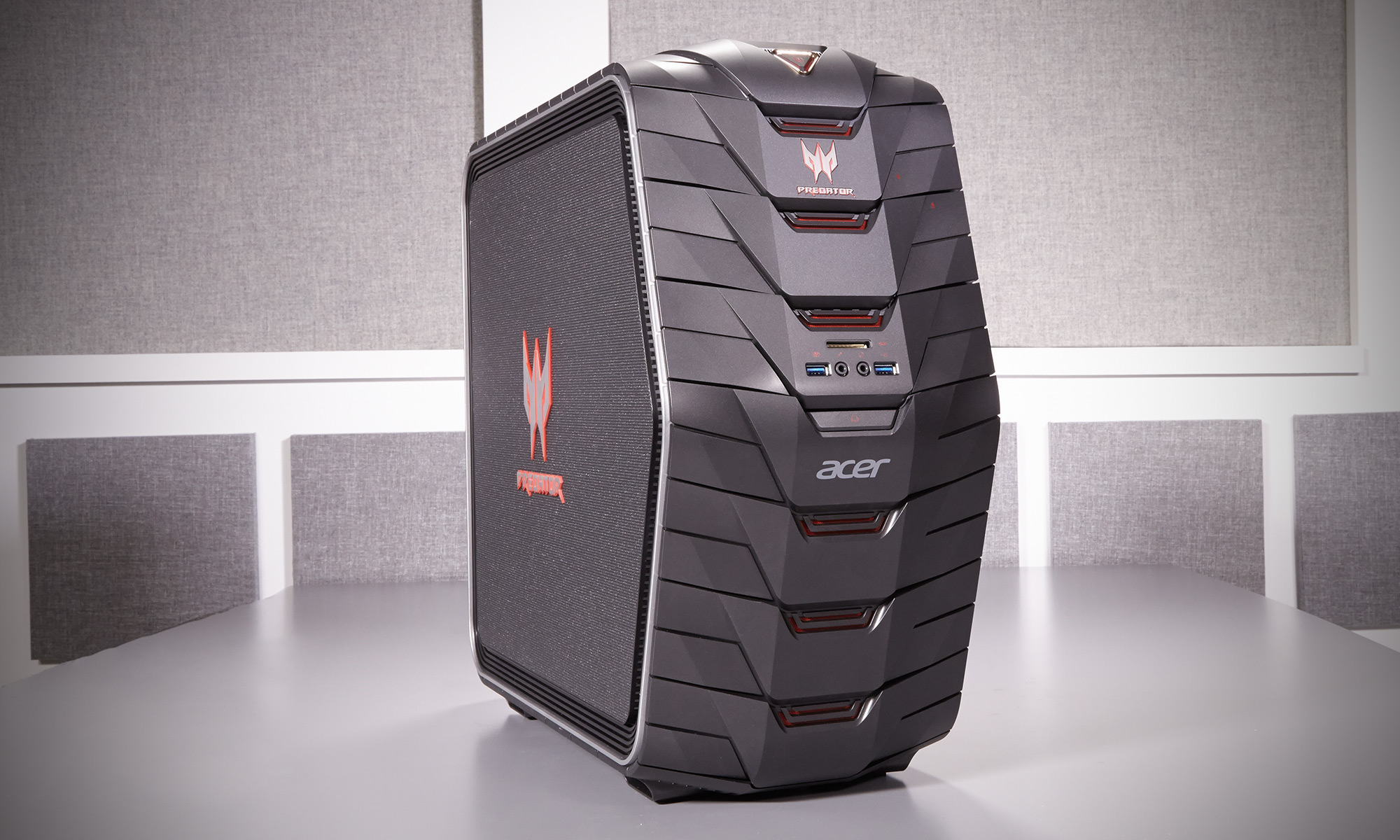Tom's Guide Verdict
The Acer Predator G6 is a beast inside and out, offering a striking yet practical design and blazing-fast gaming performance.
Pros
- +
Striking design
- +
Strong Nvidia GTX 980 gaming performance
- +
Easy-access hard drive bay and headset dock
- +
Included SteelSeries accessories
Cons
- -
No tool-free upgradability
Why you can trust Tom's Guide
The Acer Predator G6 ($1,499 starting, $1,999 as reviewed) is a gaming desktop that proves that style and substance can coexist. This beast of a PC might draw you in with its stunningly aggressive design, but you'll remember it for its strong gaming performance (thanks to its Nvidia GeForce GTX 980 graphics) and host of practical, gamer-friendly extras. The Predator G6 might not be as easy to upgrade as some of its contemporaries, but its combination of raw power, eye-catching looks and useful included accessories make it one of the best overall gaming desktop values out there.
Design
Even as someone who regularly reviews gaming PCs that look like mystical alien war chests, I was immediately captivated by the Predator G6's monstrously elegant design. With huge, charcoal scales wrapping around its uneven, curved-square chassis, the Predator looks like the result of someone repurposing a flat monster truck tire into a badass gaming machine.
The PC looks more like a heavy metal guitar amp from the side, however, thanks to its perforated left and right panels that sport huge red Predator logos in their centers. It wouldn't be a gaming PC without some backlighting, though only the power button glows red by default (overclocking the machine activates more lights, but more on that later).
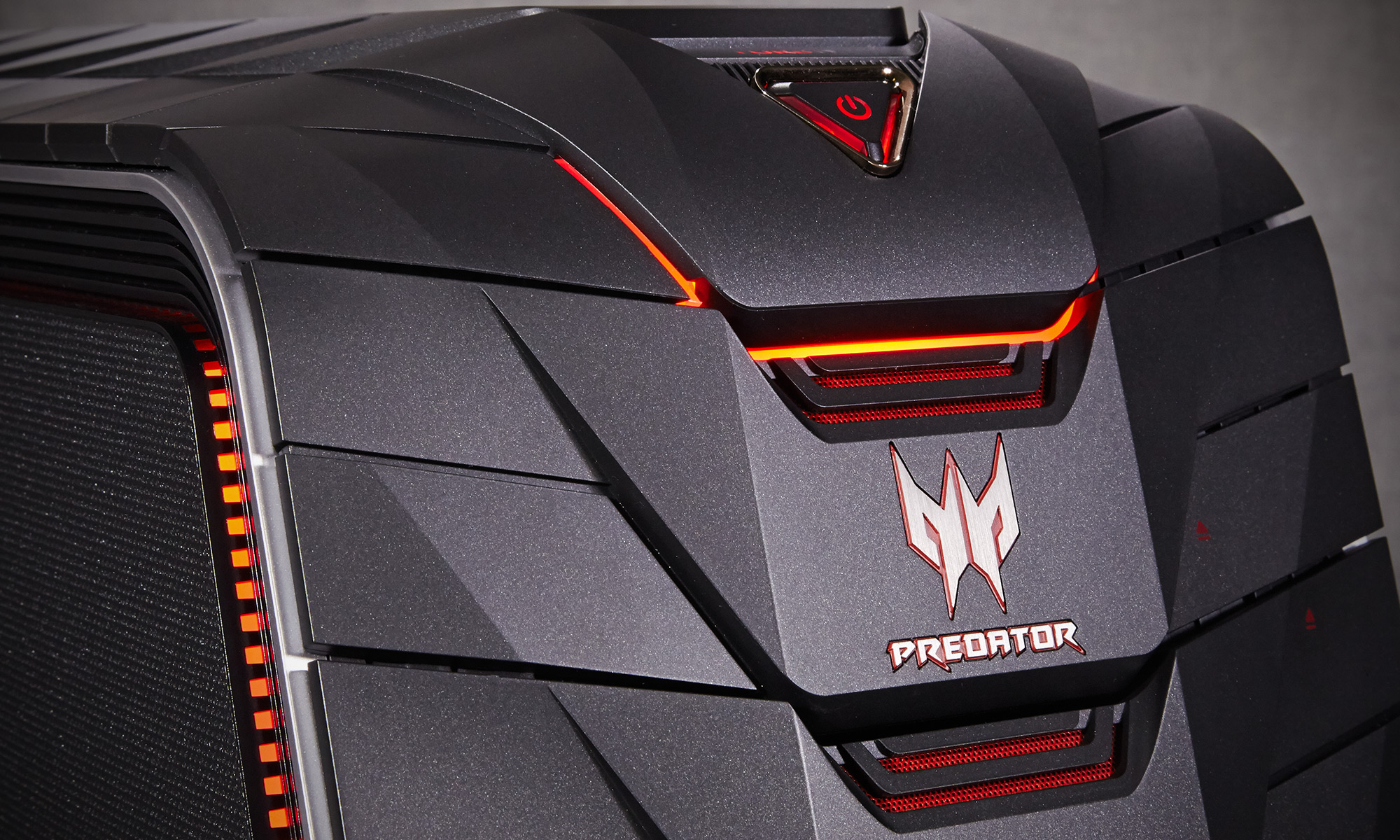
Its aggressive look might not be for everyone, but the Predator gets big points for being eye-catching without relying on see-through side panels and 10 million flashing lights.
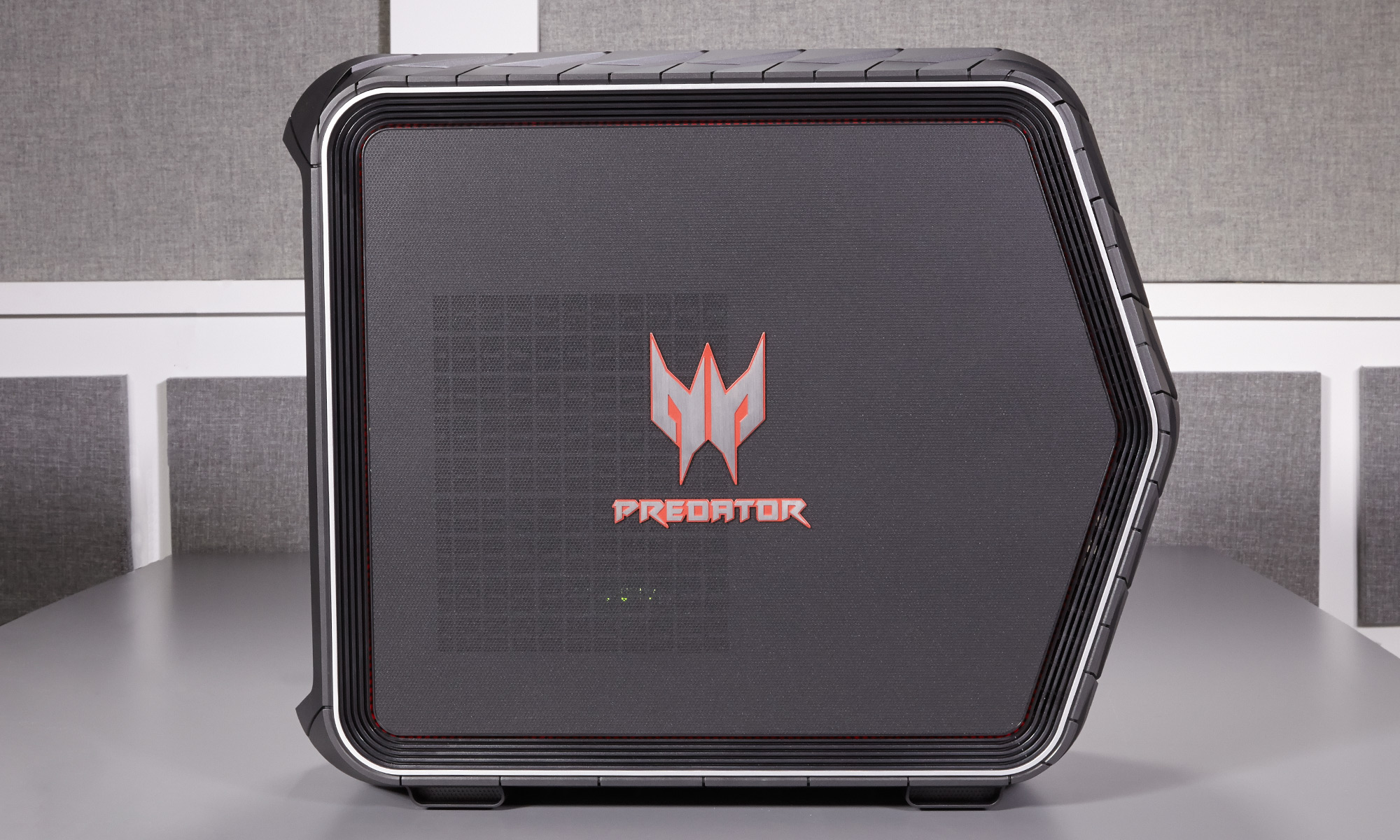
You'll need a decent amount of desk space for the 21.8 x 18.2 x 8.3-inch Predator, and lugging its 34-pound frame around won't be easy. It's not quite as sleek as, say, the Digital Storm Bolt 3 or the Maingear Drift, but it's positively compact when placed next to something as monstrous as Origin's Millennium.
MORE: Our Favorite Gaming Keyboards
Ports and Upgradability
In addition to looking scary, the Predator's scaly front side does a nice job making the PC's key ports and features easy to access. Two hidden panels at the top open up to reveal the machine's Blu-ray drive and easy-swap expansion bay, the latter of which lets you switch out storage drives without pulling out your screwdriver. There's even a handy little headset dongle that pops out of the center, allowing you to dock your headphones once you're done gaming.
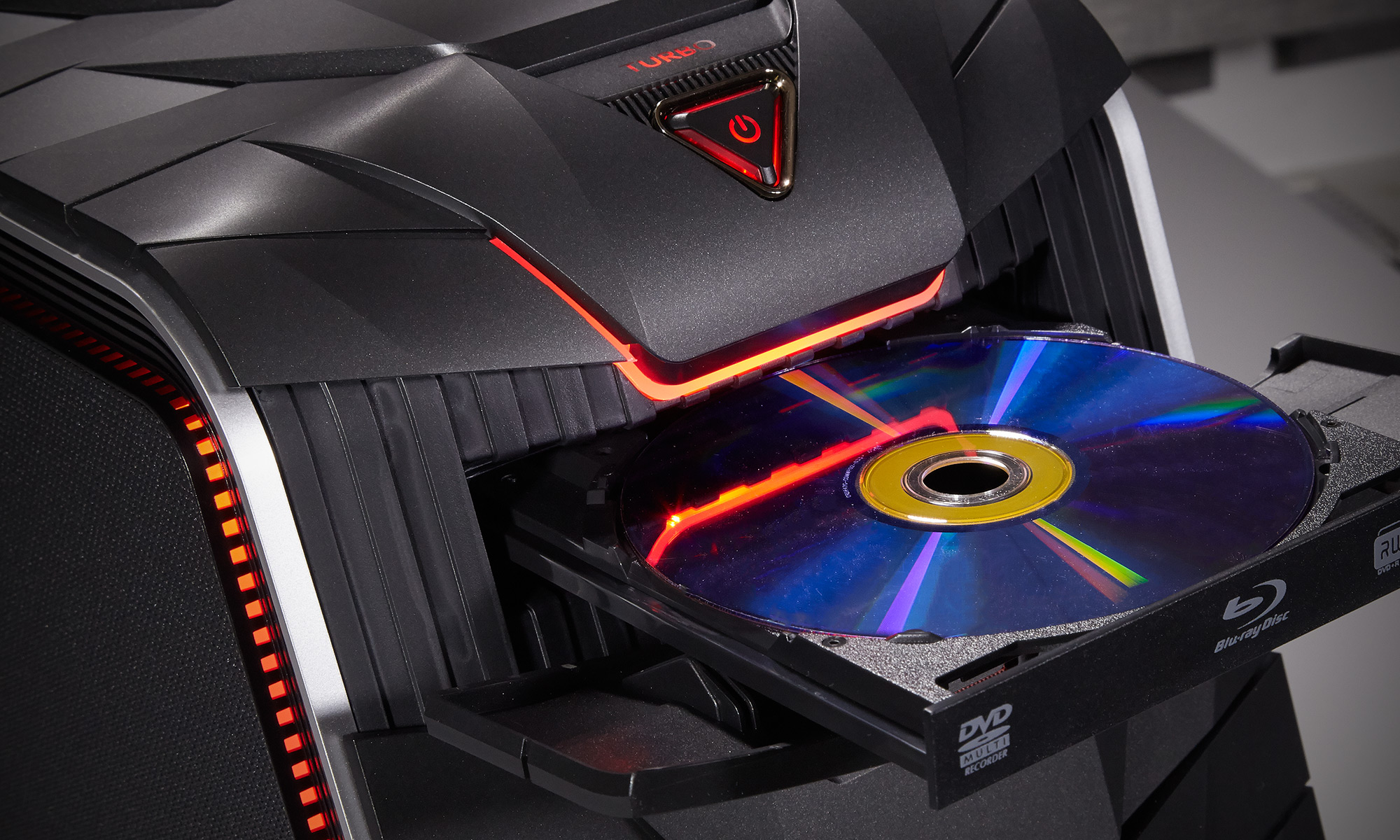
The front panel hosts all of your key plug-and-play connections: two USB 3.0 ports, headphone/microphone jacks and an SD card reader. Right at the top of the PC you'll find a Turbo button, which allows you to overclock the machine with a quick press.
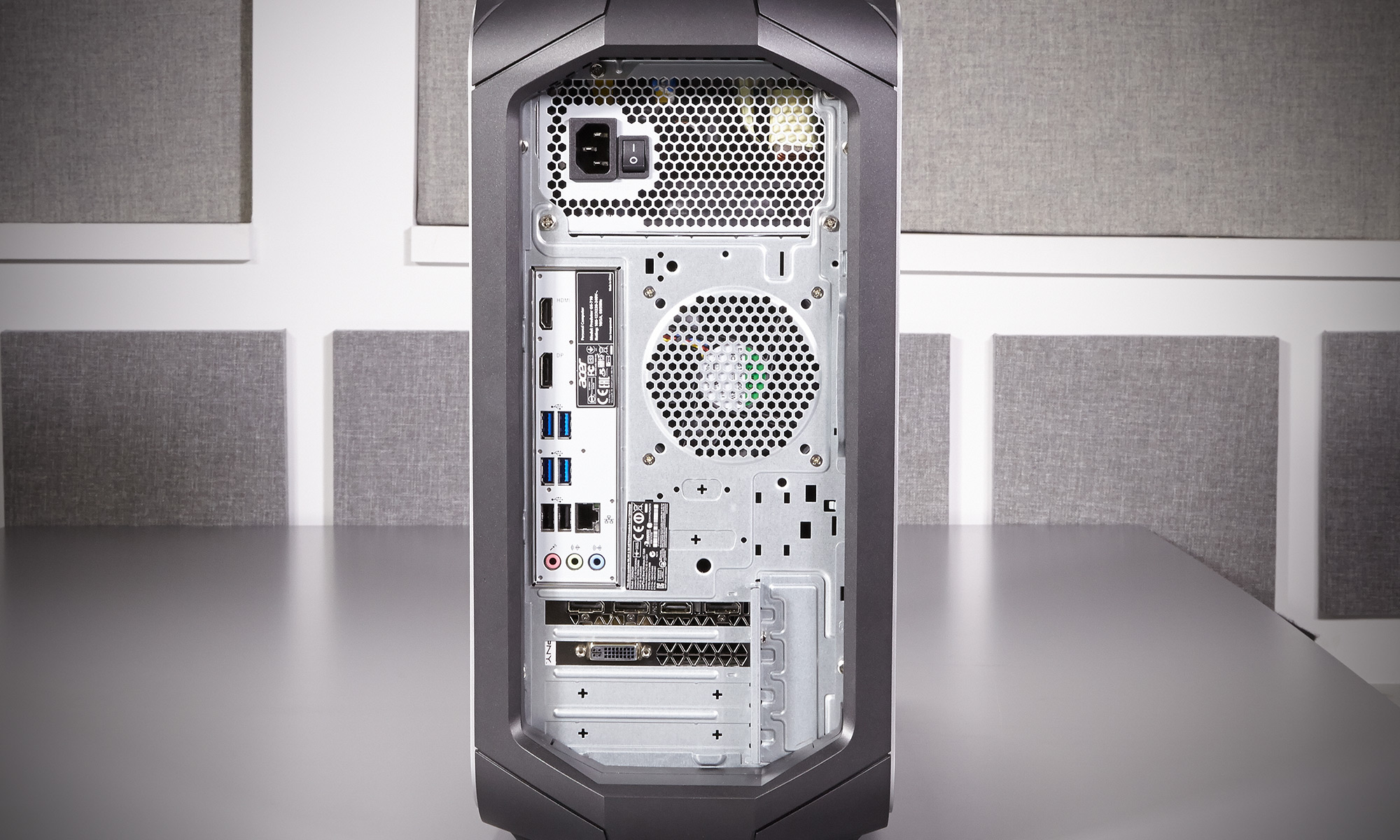
The backside packs the rest of the essentials, including an Ethernet jack, line-in, line-out and microphone jacks, two USB 2.0 ports and an additional four USB 3.0 inputs. The PC's Nvidia GTX 980 graphics card features an HDMI port as well as three DisplayPorts, making it easy to plug into one or more monitors.
The Predator looks like the result of someone repurposing a flat monster truck tire into a badass gaming machine.
Save for its hot-swap hard drive bay, the Predator doesn't offer much in the way of tool-free upgradability. The machine's rear and side panels can be popped off for easy component access, though you'll have to remove a few screws before that happens.
Gaming Performance
The Predator G6 has more than enough muscle to play mainstream games at high settings, thanks to its Nvidia GeForce GTX 980 graphics card and 4GB of video memory. When playing Star Wars Battlefront, I soared around Tatooine as Boba Fett and picked off Rebel troopers at 60 frames per second and higher, all with the game cranked to a sharp 2560 x 1440. The Predator even handled the gorgeous Star Wars shooter at 4K, though I had to settle for frame rates closer to 30 fps.
The Predator breezed through our Rainbow Six: Siege benchmarks, running the tactical shooter at the highest settings at a smooth 131 fps at 1080p, and a still-playable 37 fps at 4K. Overclocking the machine improved the 4K frame rate to 42.4 fps, though it produced the same 131 fps result in 1080p.
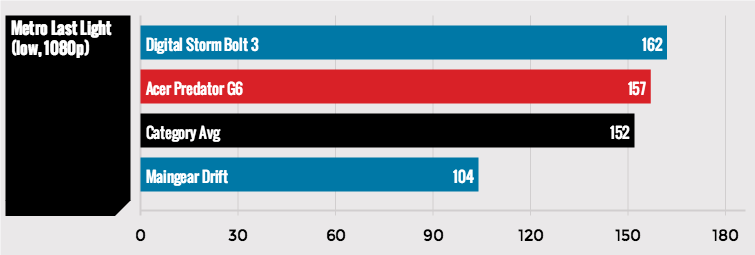
Acer's PC proved similarly strong on the more demanding Metro: Last Light benchmark, rendering the game in 1080p at 157 fps on low settings and 52 fps on high. The Predator played the game in 4K at a smooth 78 fps on low settings, but crumbled to an unplayable 16 fps on high. Our similarly priced Digital Storm Bolt 3 (GTX 970) turned in comparable results, with high and low 4K frame rates of 70 and 14 fps, respectively.
The Predator netted an 11,098 on the 3DMark Fire Strike test, topping the Bolt 3 but lagging behind our 13,344 average.

Overall Performance
The Predator doesn't just handle games well — it can also juggle all of the other geeky things I typically do all at once on a PC. Thanks to the machine's Intel Core i7-6700K processor and 16GB of RAM, I never encountered slowdown even as I watched five Twitch streams, downloaded two games and ran a full system scan.
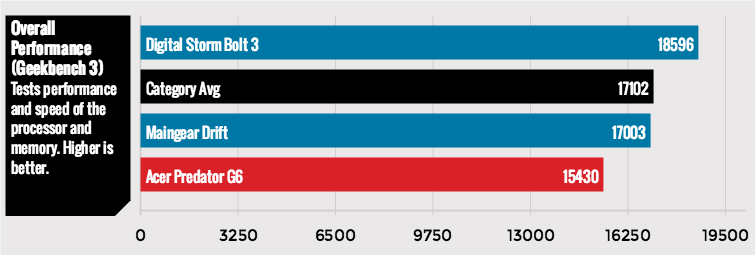
Acer's PC scored 15,430 on the Geekbench 3 performance test, a strong number that still comes up short of the Core i7-6700K-powered Bolt 3 (18,596) as well as our 18,207 gaming desktop average. Activating the Predator's overclocking mode didn't make a hugely noticeable difference during day-to-day use, but it did up the PC's Geekbench score to 17,793.
I soared around Tatooine as Boba Fett and picked off Rebel troopers at 60 frames per second, all with the game cranked to a sharp 2560 x 1440.
The Predator's 256GB SSD proved to be impressively speedy, copying 4.97GB of mixed media at a brisk 191 MBps. That's faster than the Bolt 3's 250GB SSD (188 MB) but just below our 218 MBps average.
Mouse and Keyboard
I was pleasantly surprised to find that our Predator shipped with two legitimate gaming peripherals from SteelSeries: the Apex Raw keyboard and the Sensei Raw mouse. These budget-conscious accessories might not have all of the fancy lighting options and extra features found in their non-Raw counterparts, but they still held up well in and out of games.
The Apex is huge and loaded with extra keys, packing a total of 15 macro buttons that fans of MMO games should get plenty of use out of. It feels surprisingly satisfying for a membrane keyboard, offering snappy keys, a springy, extra-large space bar and a generous wrist rest. There are lots of neat, small touches, like a set of bumps on the W key for quickly getting to your WASD movement keys without looking down.
MORE: Our Favorite Gaming Mice for Every Genre
The Sensei Raw mouse is supremely comfortable, with a pleasantly ergonomic shape and a cozy, soft-touch plastic exterior. The symmetrical mouse sports two thumb buttons on either side, making it equally ideal for lefties and righties.
Both accessories are powered by SteelSeries' excellent Engine 3 software, which makes it super-easy to map each device's buttons and create game-specific profiles. While each peripheral's illumination is limited to white, you can adjust brightness and dictate whether the lights pulsate or glow steadily.
Software
The G6's Predator Sense app lets you monitor the system's CPU frequency and temperature, as well as adjust fan speed and overclocking settings. You can also toggle the PC's panel lighting, which, oddly, only glows when you're overclocking the machine. Despite a lack of lighting options, Predator Sense is a useful and pleasingly lean app that shows you what you need to know quickly.
MORE: The Best Headsets for Immersive Gaming
The Predator also packs SoundBlaster's X-Fi MB5 app for fine-tuning your audio experience. You can activate sound presets for genres such as action and first-person shooter, or create custom profiles with your ideal balance of bass, surround and special effects. The MB5 app definitely made a difference in-game when I cranked up the low-end and activated digital surround. However, Scout Mode, which is designed to highlight enemy footsteps, was harder to notice.
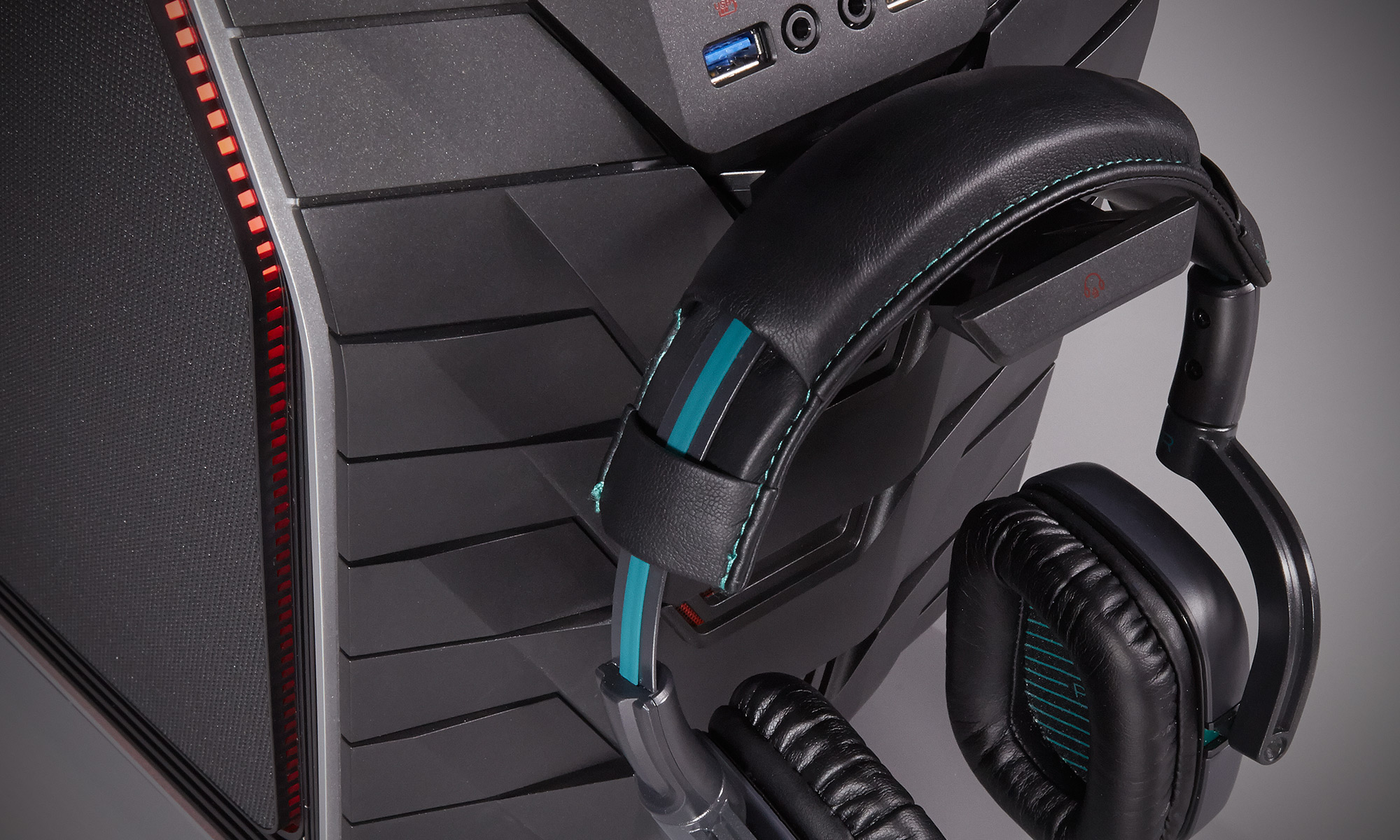
Configurations
The Predator's starting $1,499 configuration features an Intel Core i7-6700K processor, GeForce GTX 970 graphics, 8GB of RAM and a 1TB hard drive with 128GB of flash storage. Spending an extra $100 for the $1,599 config will double the RAM to 16GB.
Our $1,999 configuration offers the best specs possible, with stronger GTX 980 graphics, a 2TB hard drive and a 256GB SSD. All models include Acer's 2-year limited warranty.
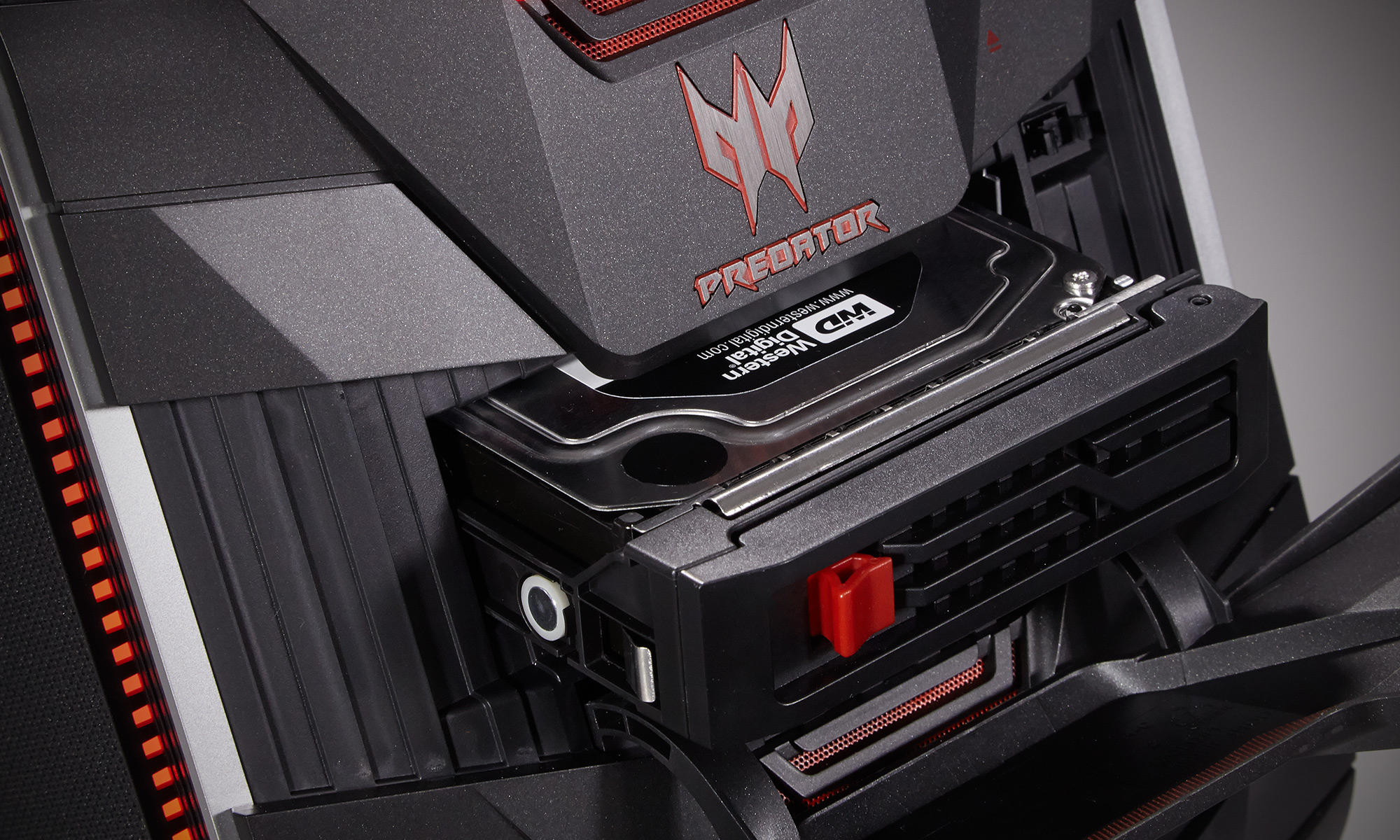
Bottom Line
If you want a gaming PC that's as good at turning heads as it is at running new games at their highest potential, the Acer Predator G6 ($1,499 starting, $1,999 as reviewed) is a great choice. This monstrous tower's GTX 980 graphics card and 6th-Gen Core i7 processor provide plenty of power for high-end (and VR) gaming, and its striking design is filled with practical touches, such as a hot-swap hard drive bay and a headphone dock. Competitors such as the Digital Storm Bolt 3 and the Lenovo Y900 offer easier upgradability, but the Predator's distinct design and useful suite of extras make it one of the strongest overall desktops in its price range.
Mike Andronico is Senior Writer at CNNUnderscored. He was formerly Managing Editor at Tom's Guide, where he wrote extensively on gaming, as well as running the show on the news front. When not at work, you can usually catch him playing Street Fighter, devouring Twitch streams and trying to convince people that Hawkeye is the best Avenger.
